In any given season, I start an entire lot of crops from seeds, every indoors and outdoor. Starting seeds has many advantages over in search of begins (along with entry to a much bigger variety of crops and being moderately extra economical), nonetheless it moreover comes with challenges.
Even primarily primarily basically essentially the most skilled gardener makes errors in relation to seed starting, and admittedly, I’ve been accountable of among the many many many ones I’m sharing beneath.
So be taught from the errors of my strategies and improve your potentialities of success this season: I’m laying out the 12 commonest seed-starting errors I see and take heed to about, and what you may do to forestall or restore them.
1. Using outdated seeds.
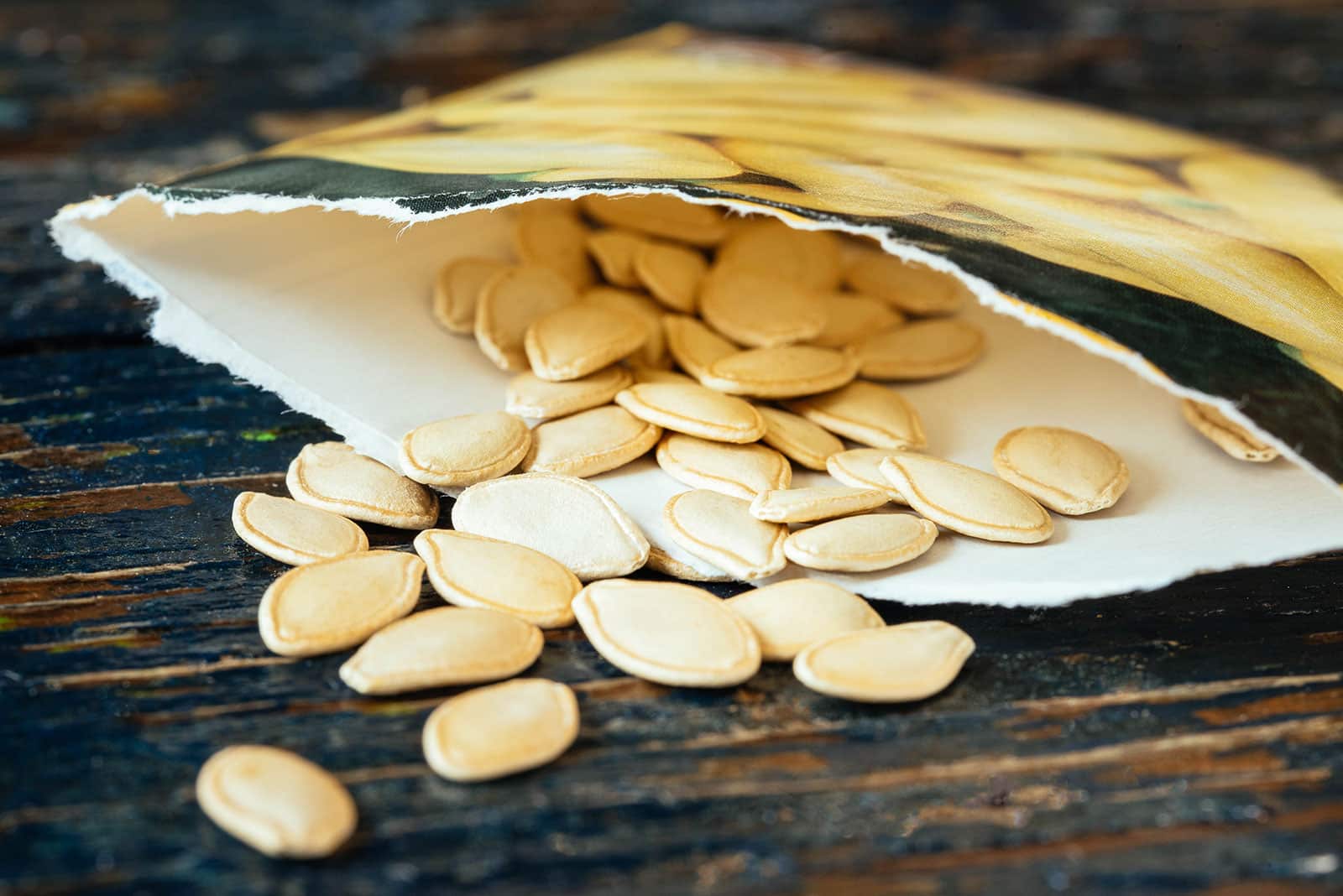

Certain, certain, we’ve all heard referring to the long-forgotten packet of tomato seeds that any specific individual found of their basement 20 years later, and the seeds nonetheless sprouted miraculously.
Nonetheless all seeds have a shelf life, and that shelf life tremendously diminishes contained within the frequent dwelling resulting from we recurrently retailer seeds in less-than-optimal circumstances. (Listed below are some straightforward seed storage ideas to help shield your seeds further viable.)
To not diploma out, many seeds don’t closing as long as we predict. Onion seeds, for instance, are solely good for a yr at most. Most certainly you have received been able to get that two-year-old onion seed to germinate, nonetheless chances are high excessive, it gained’t attain its fullest potential as a plant.
Why? On account of regardless {{{that a}}} seed could germinate, that doesn’t translate appropriate correct proper right into a will to thrive. Seed vigor determines how a seedling will develop, and compromised vigor (ensuing from age or fully completely totally different environmental elements) will impact how accurately the roots develop, how briskly the plant grows, and what variety of flowers (and fruits) it produces.
Most seed packets don’t itemizing an expiration date; they itemizing a packing date, which you might use to estimate the shelf lifetime of your seeds. For lots of who’re undecided how prolonged your seeds will closing, use my chart which can allow you determine their viability.
2. Failing to account for “days to maturity.”
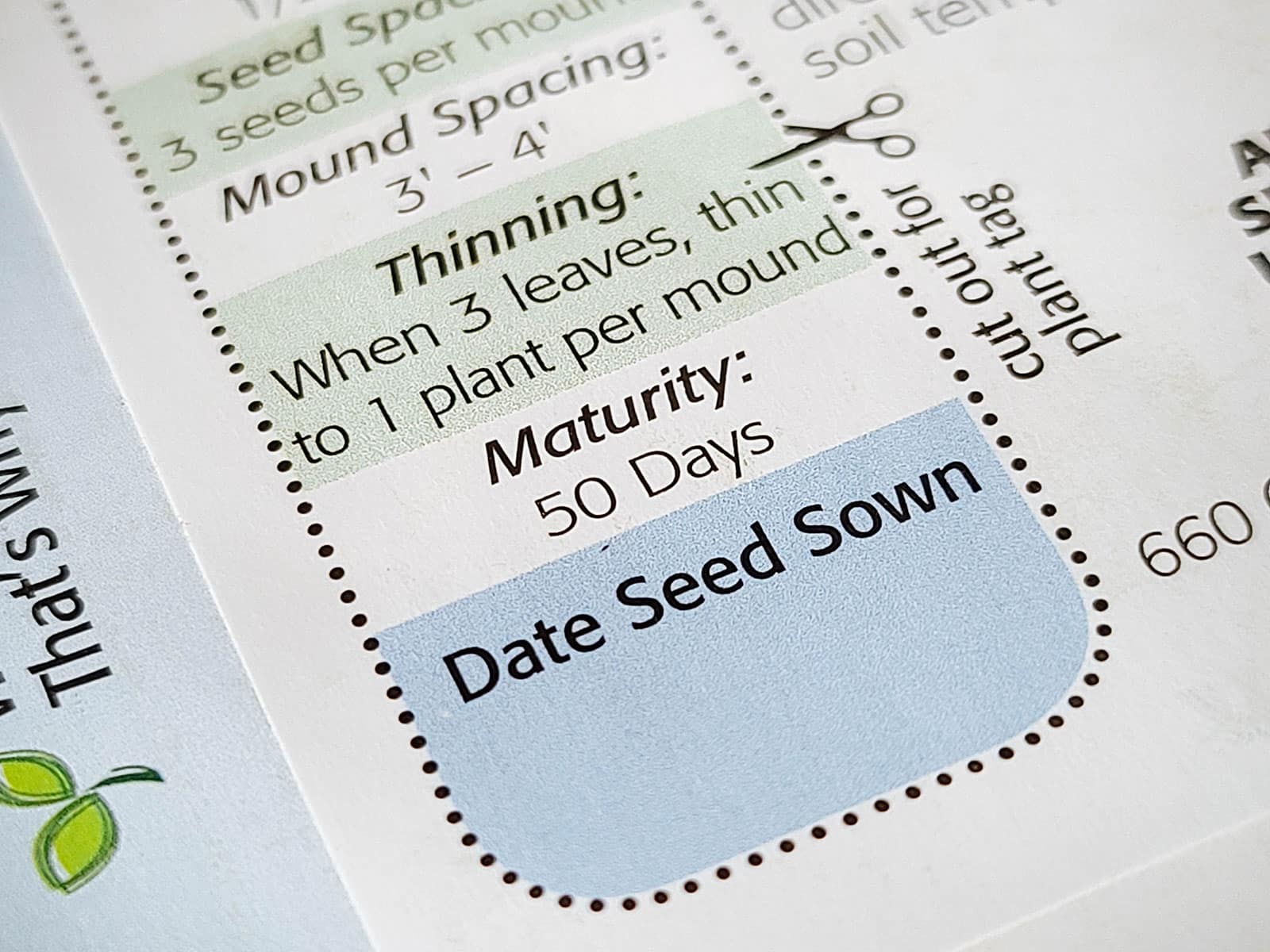

A gorgeous number of people perhaps don’t think about the fragile “days to maturity” label on their seed packets. (You’ve moreover seen it as “days to reap.”) Nonetheless while you dwell in an space with a cooler or shorter rising season, that’s one time interval you have to to know.
Let’s say you reside in zone 5 and resolve to start winter squash from seed that takes 110 days to maturity. Accurately, you’re not going to get very far collectively collectively collectively along with your crop till you start these seeds indoors early and may present frost security in spring and fall.
Nonetheless, there are a complete lot of winter squash varieties that take solely 80 or 90 days to mature, and in addition to you’re larger off starting these sorts of seeds to maximise your harvest.
Days to maturity usually is a difficult drawback to go looking out out on account of the number of days typically begins from the time you sow the seed, and customarily begins from the time you transplant the seedling. (Weird, I do know.)
To go looking out methods to decipher this cryptic countdown, look at further about examine to search out out a plant’s exact days to maturity. (You’ll want to use this information alongside facet your frequent frost dates—which I cowl inside the next stage—to get a further correct picture of your rising season.)
3. Starting seeds on the mistaken time.
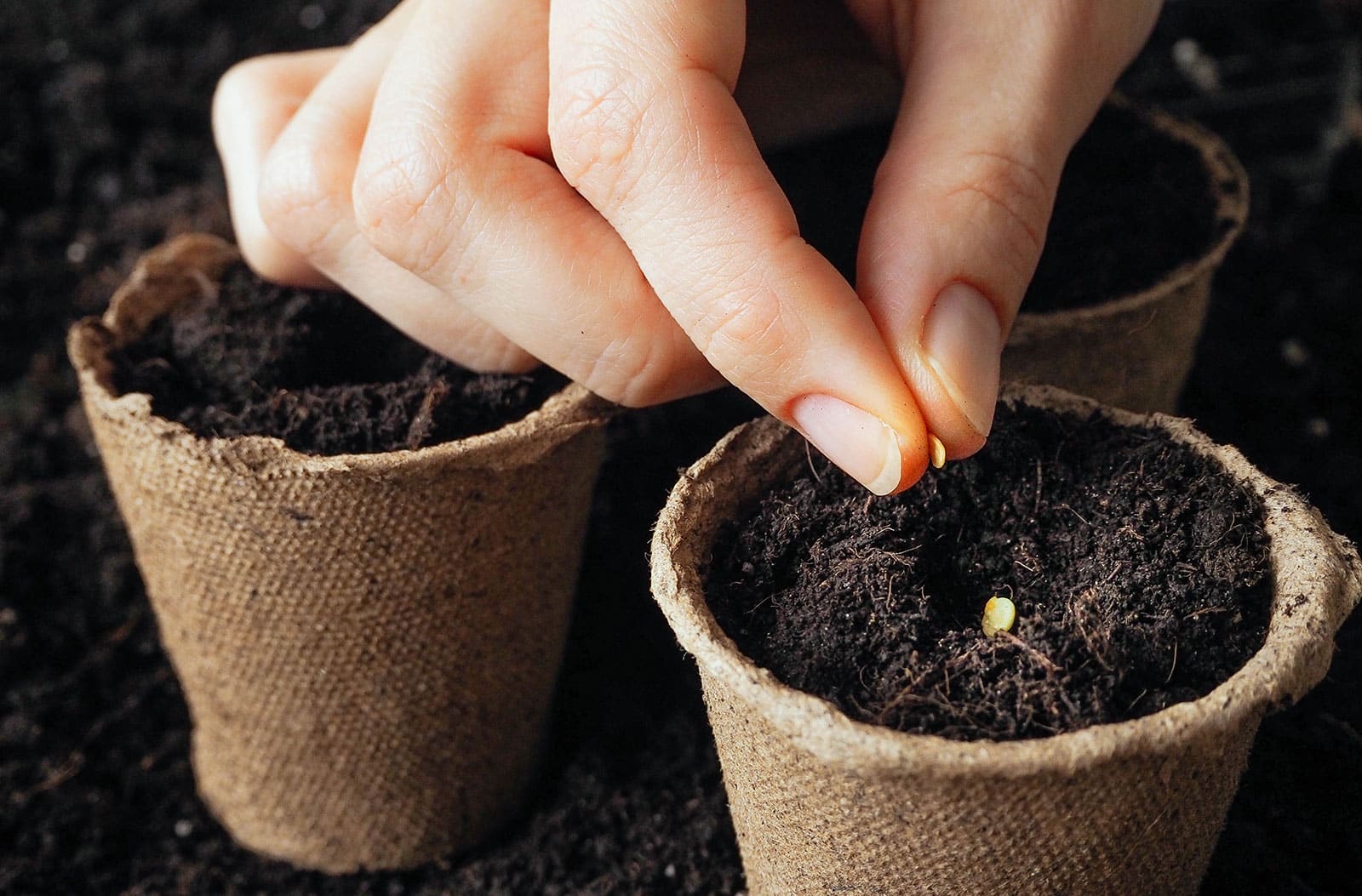

It’s frequent to suppose that all seeds must be started in spring—nonetheless exactly when in spring (or late winter, for that matter) is an important drawback too.
For lots of who sow your seeds open air too early, they could rot inside the underside whereas they wait for soil temperatures to warmth up. All through the meantime, indoor-started seedlings could develop to be large and overgrown earlier than it’s time to transplant them contained within the yard.
For lots of who start your seeds too late, you menace the native local weather being too warmth for certain seeds (like lettuce) to germinate. Or, indoor seedlings could presumably be too small to transplant of their splendid timeframe, leading to decreased yields.
So, when do it’s a must to start seeds? All of it comes all one of the simplest ways by which all one of the simplest ways proper right down to understanding the frequent closing frost date in your specific area.
As shortly as your closing frost date, merely rely backward the number of weeks required for each sort of plant to be direct sown or transplanted. (This info can also be found on the seed packet; principally, most vegetable seeds need about six to eight weeks to get to transplant measurement.)
To calculate your frost dates, use my personalised planting calendar, print out a replica, and shield it collectively collectively collectively along with your seed packets.
4. Forgetting to stratify seeds.


Stratification (furthermore generally known as chilly stratification) doesn’t apply to all seeds, nonetheless it’s the number-one motive some seeds take their sweet time germinating (or refuse to germinate within the least).
Take milkweed, for instance. Due to it’s a flower, you could most likely have tried to start milkweed seeds in spring collectively along with your complete fully completely totally different flowers, solely to look out it didn’t sprout until the next yr. What offers?
Milkweeds (and fully completely totally different flowers resembling black-eyed Susans, pansies, and coneflowers) want a protracted interval of chilly and moisture to interrupt dormancy earlier than they germinate. This habits is typical of certain native perennials, which—contained within the wild—observe a pure pattern of dropping their seeds in fall and sprouting in spring.
You presumably can mimic this freeze/thaw cycle by refrigerating your seeds in a moist medium for pretty a few weeks earlier than you sow them. Appropriate correct proper right here’s a info on examine to stratify seeds exactly, and which seeds require it.
5. Starting seeds in native soil.
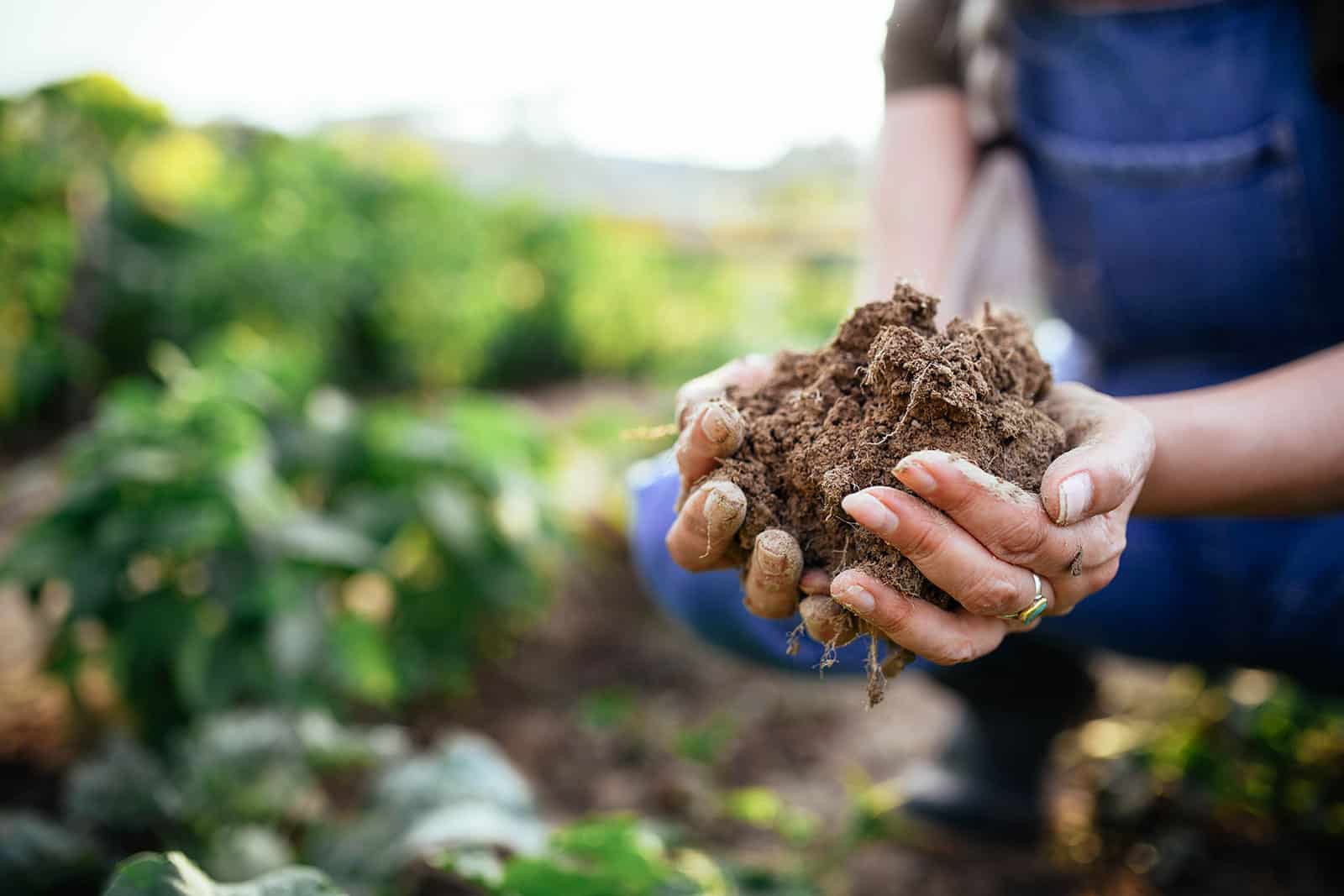

Let me be clear that all seeds can also be started in native soil… as long as they’re open air.
Nonetheless while you’re starting seeds inside, most native soil (that is, the frequent soil in your yard) is simply too dense for the tiny, closed ambiance of a seed-starting tray or seedling pot. With out the huge soil amount of a yard mattress, native soil gained’t drain accurately, leading to components like overwatering or damping off.
That’s why the perfect soil medium for indoor seed-starting is definitely a soilless medium that has an beautiful steadiness of moisture retention and drainage. It’s best to utilize vermiculite to germinate seeds, buy a high-quality seed-starting mix, or—while you’re starting quite a lot of seeds—get financial financial monetary financial savings by making your specific specific individual pure seed-starting mix at dwelling.
6. Sterilizing your seed-starting soil and seedling pots.
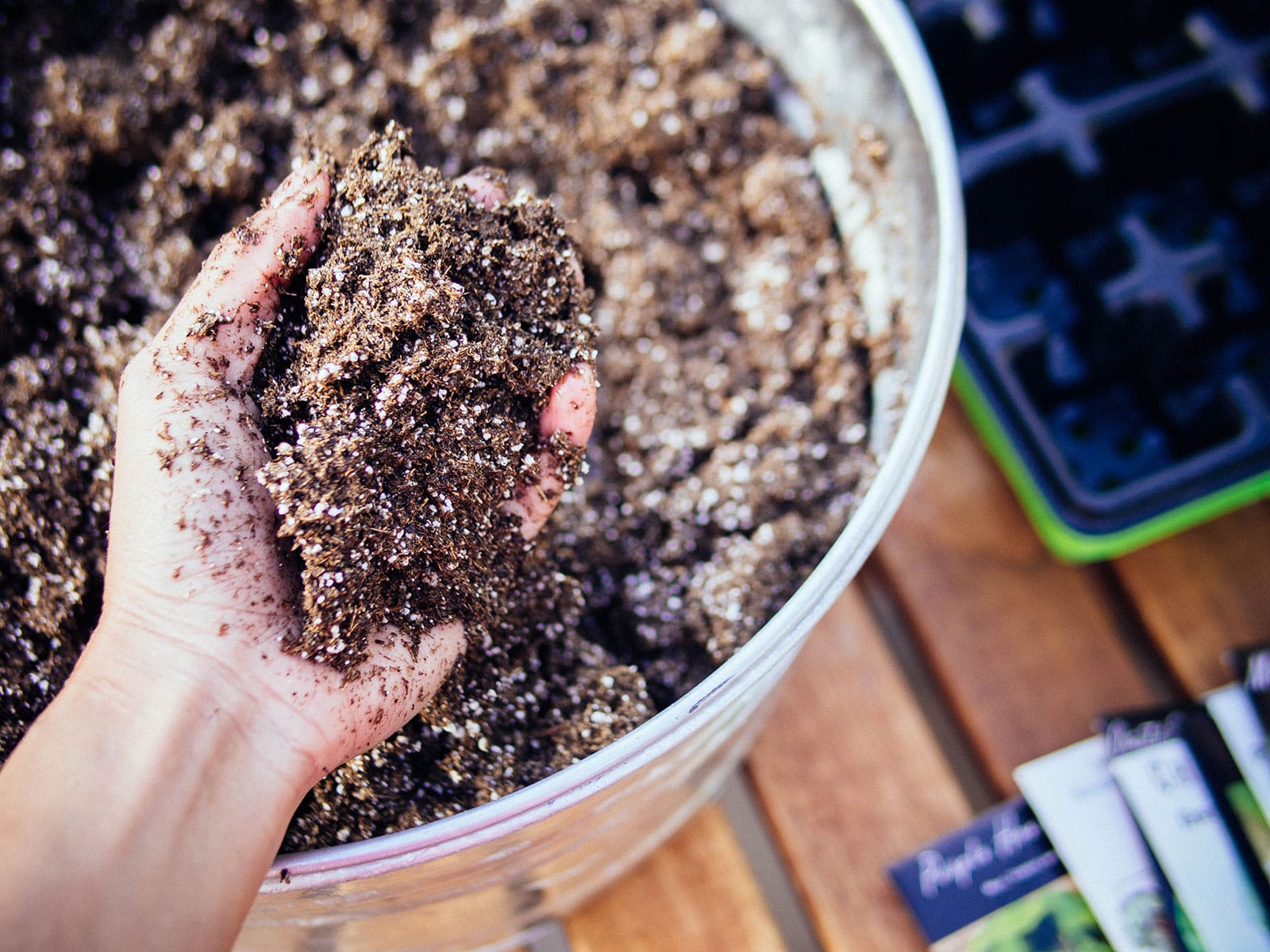

After I first started gardening, I look at just some articles on-line that recommended people to sterilize their seed-starting soil on a sheet pan, contained within the oven, of all components! The reasoning was that with none fungi and micro organism contaminating your seeds, you’d stand a much bigger likelihood of rising healthful seedlings.
Nonetheless regardless that some store-bought seed-starting mixes declare to be sterile, they don’t seem to be sterile while you open the bag and scoop them into your pots.
And sterile soil isn’t primarily good in your seedlings, anyway. These youthful crops should acclimate to life open air—in vibrant soil teeming with microbes (every good and harmful)—with the intention to do their best.
The identical goes for bleaching your pots with the intention to sterilize them. (I talk about further about why I on no account sterilize my plant pots on this fully completely totally different submit, and why you shouldn’t each.)
All of that’s merely overkill and, pretty in truth, a waste of time. In case your seedlings are affected by fungal or bacterial sicknesses, the potential offender is overwatering or an extreme quantity of humidity.
7. Planting too deep (or not deep ample).
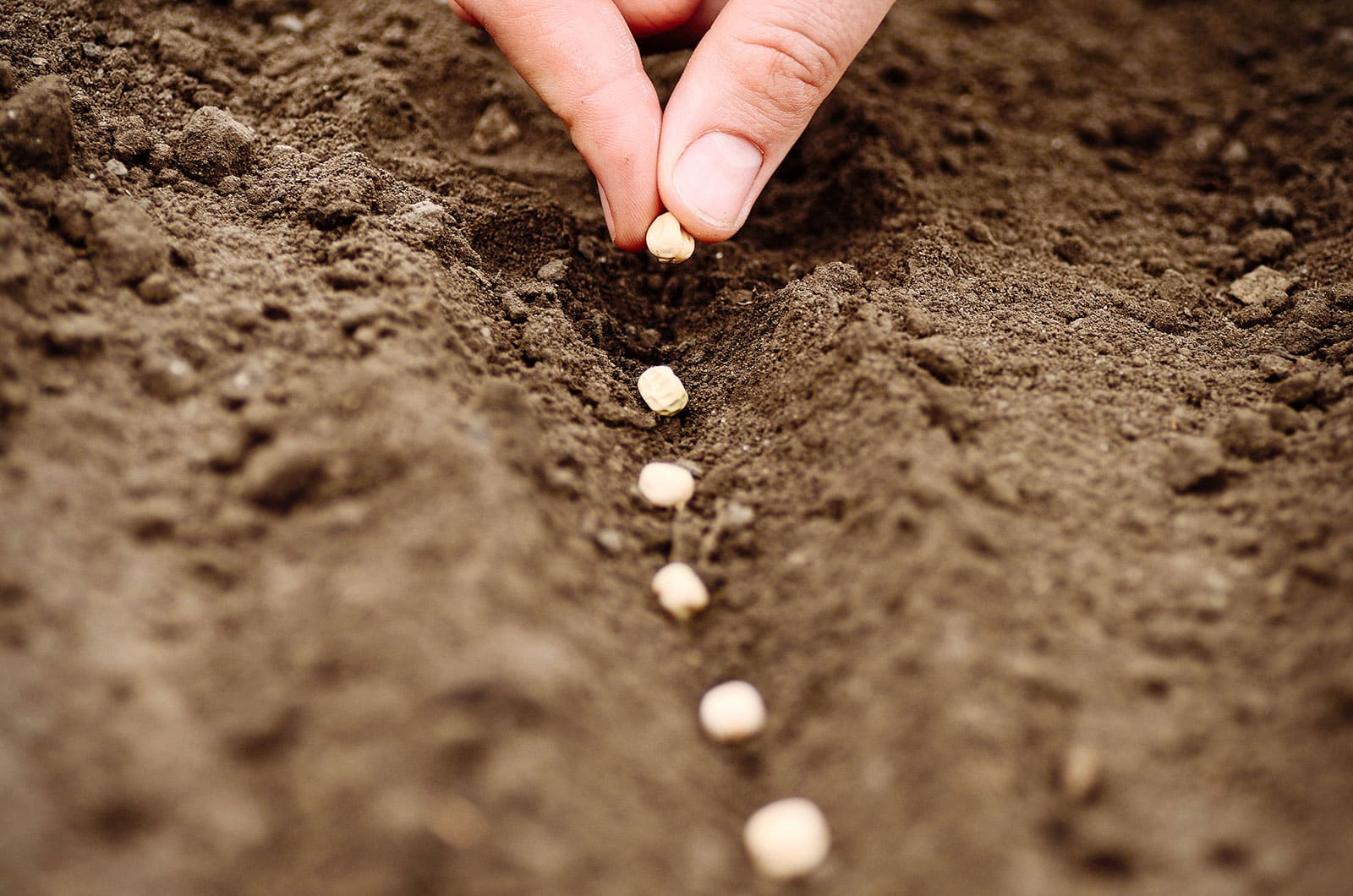

Small seeds resembling basil, onions, and carrots should solely be coated very calmly with soil or vermiculite. That’s resulting from these little specks of seeds don’t have the vitality inside them to push by the use of fairly a number of soil as rapidly as they germinate.
A typical rule of thumb is to plant seeds at a depth that’s equal to 2 or 3 occasions their width (or diameter).
So if a seed is 1/2-inch large, plant it 1 inch deep. If a seed is 1/8 inch thick, plant it 1/4 inch deep. Greater seeds (like beans and peas) must be planted deeper than smaller seeds (like cucumbers and tomatoes).
Then as quickly as further, some seeds (like lettuces and celery) really want mild to germinate. For lots of who cowl them with a layer of soil, they potential gained’t emerge.
The highly effective drawback is when you don’t cowl certain seeds ample… then they may dry out on prime earlier than their seed coats can swell and rupture (a course of all people is conscious of as germination—appropriate correct proper right here’s a visual info of exactly what happens a seed germinates).
Personally, I really truly actually really feel it’s larger to err on the facet of planting too shallow than too deep while you’re starting seeds indoors, since you could shield a much bigger eye on moisture ranges.
8. Starting seeds on a window sill.
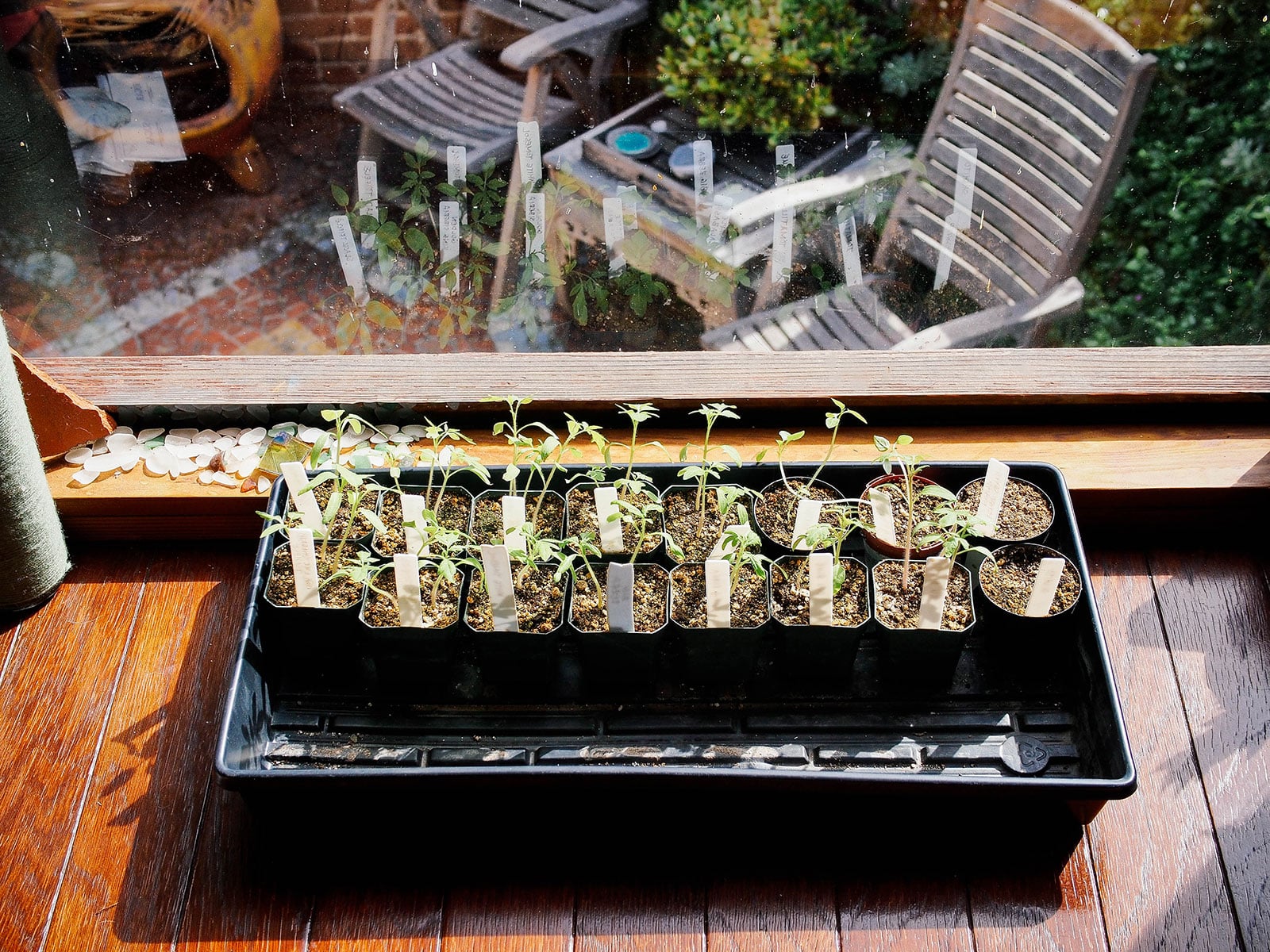

I confess that I typically nonetheless do this, regardless that it’s not primarily primarily basically essentially the most splendid state of affairs. Seeds started in entrance of a window (notably a non-south coping with window) often don’t get ample {photograph} voltaic to develop large and very environment friendly.
Normally, seedlings want a minimal of 12 hours of sunshine per day (though they do even larger with 14 to 16 hours of sunshine). These numbers are laborious to know in a window, and with the arc of winter’s {photograph} voltaic, seedlings usually end up weak and spindly as they stretch upward or sideways for further mild. (Be taught to revive leggy seedlings if that’s happening to you.)
The one precise dedication is to start seeds under artificial lights. Nonetheless earlier than you suppose a develop mild station is simply too dear to rearrange, know that you might use extraordinary (and low worth) LED or fluorescent retailer lights in your seedlings. Merely grasp the shop lights above the seedlings and set them on a timer to activate for 14 hours a day.
The exact extreme over your seedlings will rely upon the output of your lights—chances are high you may need to take a look at the producer’s decisions. LED lights often emit further mild and must be hung a minimal of a foot or further above your crops, whereas fluorescent lights can also be hung solely a pair inches away.
9. Overwatering (or underwatering) seeds and seedlings.
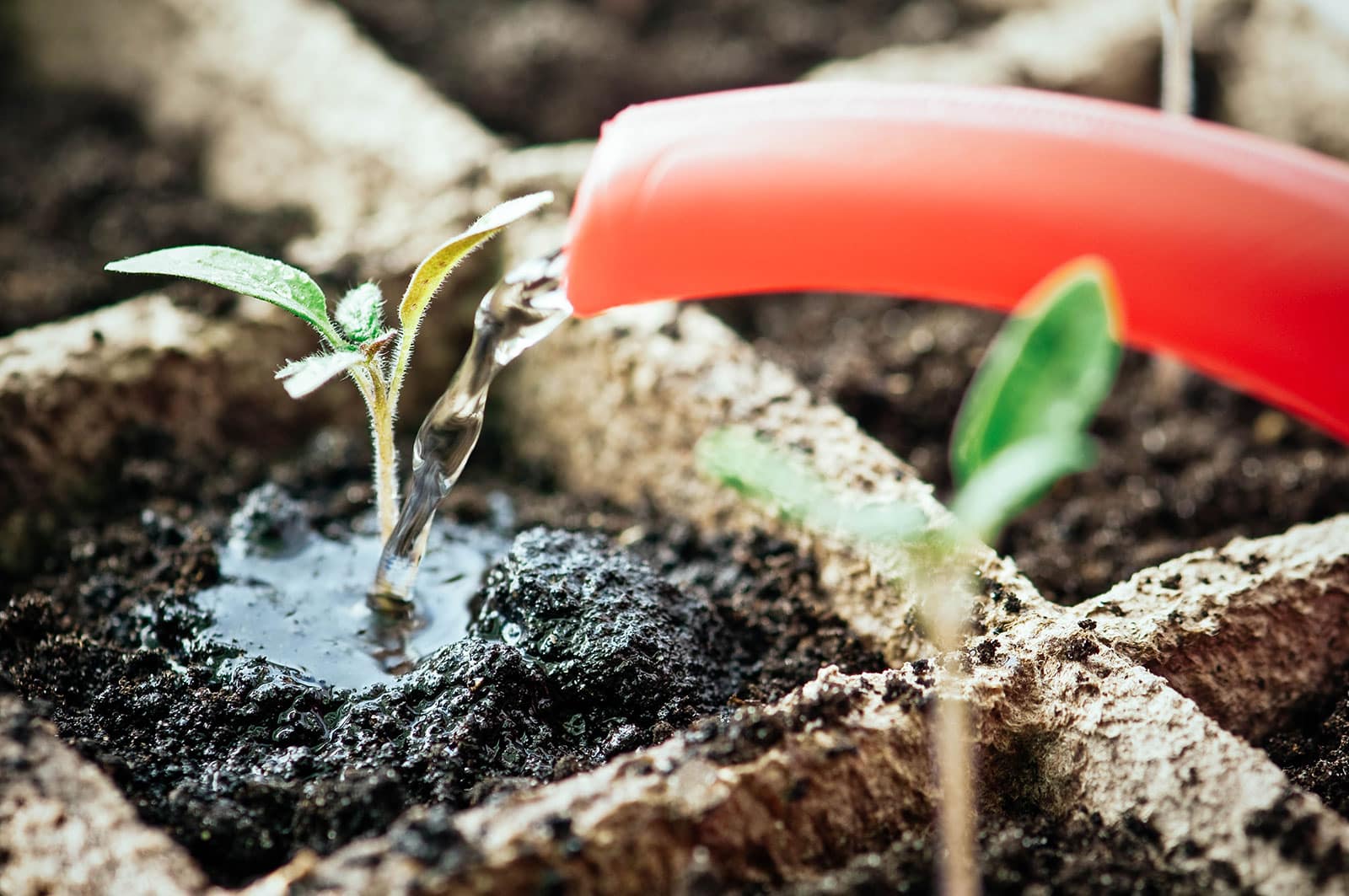

Overwatering is likely to be the number-one motive for seed and seedling components. Whereas seeds need fixed moisture to germinate, too tons moisture could set off them to rot earlier than they’ve a chance to sprout. Further moisture will even be a motive some seedlings keel over impulsively (in a non-treatable state of affairs typically commonly known as damping off).
On the flip facet, underwatering your seeds could set off a crust to variety on the soil flooring, making it extra sturdy for germination to occur. If the seedlings do care for to push by the use of the crust, lack of moisture near the underside (the place the roots are) could lead to stunted progress or premature demise.
For lots of who’re inclined to have bother with watering, chances are high you may need to make use of a good-quality seed-starting mix or a lightweight, fluffy potting soil that retains and drains water exactly.
10. Not hardening off seedlings.
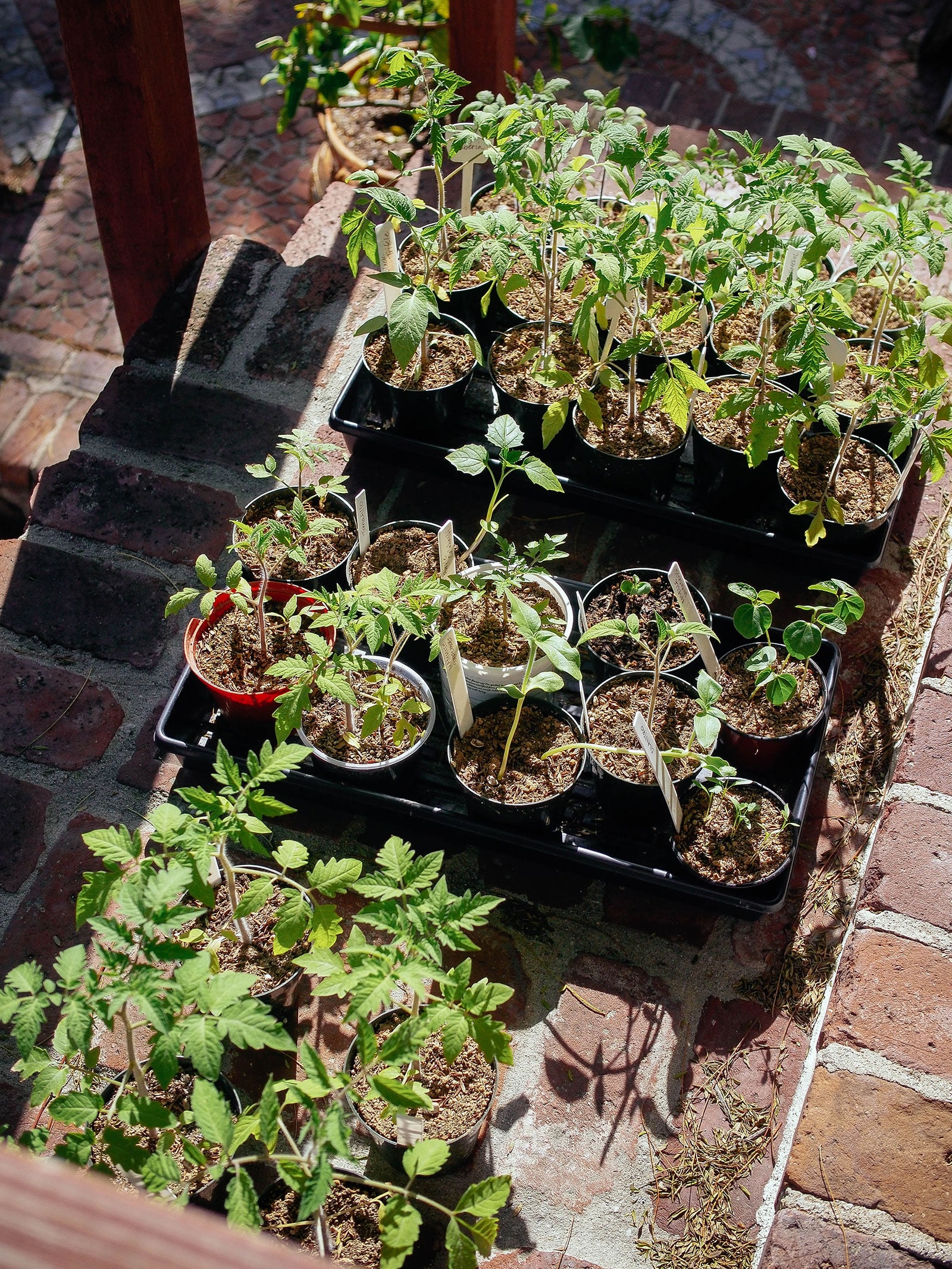

Seedlings started indoors should acclimate to the native climate earlier than being transplanted exterior.
Give it some thought: Your seedlings have spent the first few weeks of life in a warmth, cozy ambiance, sheltered from wind and rain, and in addition to you’re about to kick them out into the precise world.
All through the occasion that they aren’t prepared for the extraordinary daylight, chilly nights, or sturdy breezes in your yard, they’re not inclined to survive or thrive. Biggest case state of affairs, your seedlings bear a bit little little little bit of thermal shock and are sluggish to get going. Nonetheless in a great deal of cases, progress is stunted or they develop to be inclined to pests and sicknesses.
So earlier than you set your seedlings open air, chances are high you may should toughen them up first (as temperatures allow). Observe my info on examine to harden off your seedlings—in seven days or masses rather a lot a lot much less!
11. Not thinning seedlings.
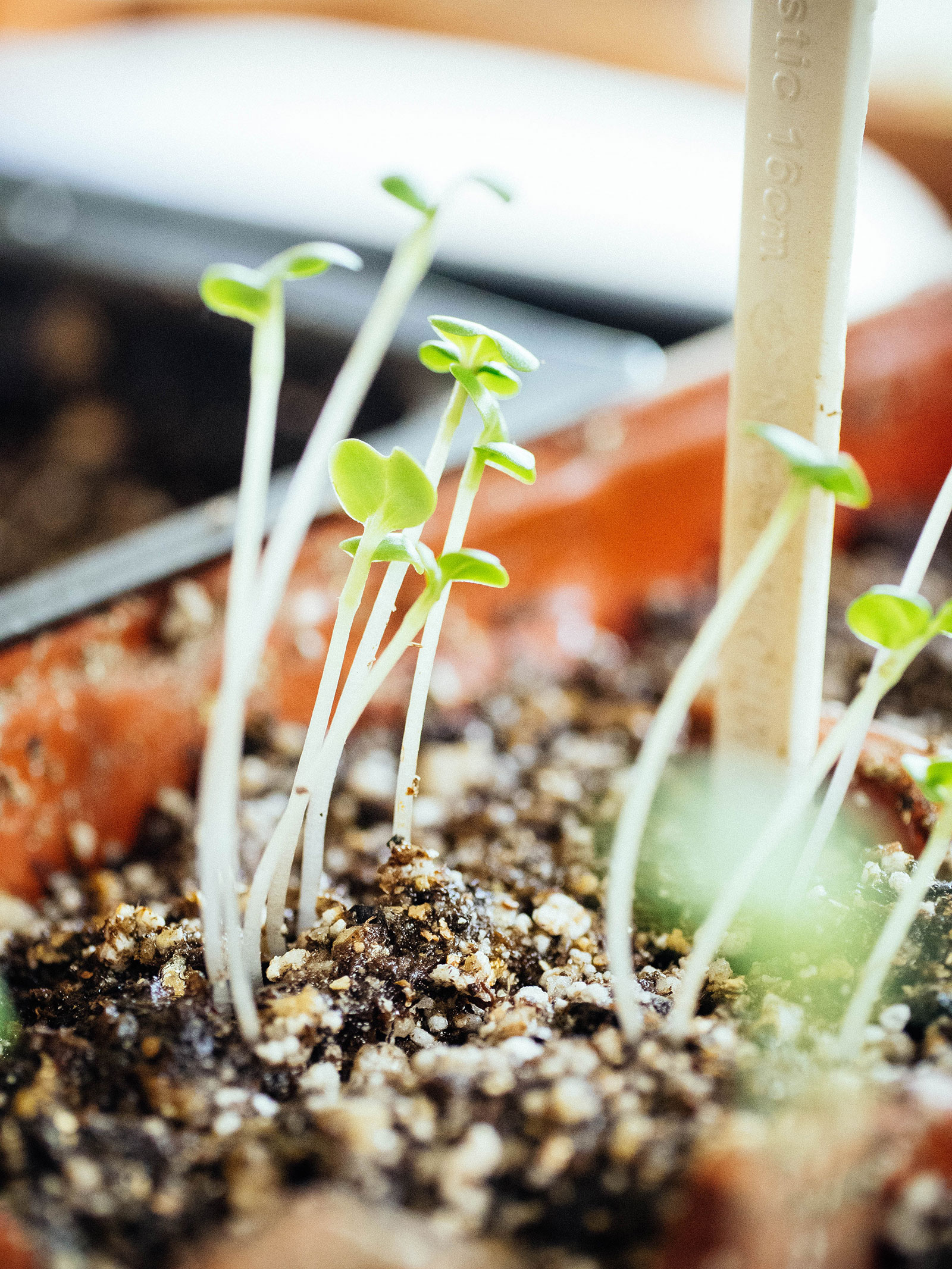

Seeds (considerably tiny seeds) are inclined to get sown intently collectively to account for just some seeds failing to germinate. However when all of them germinate, you end up with a cluster of seedlings all vying for mild and moisture.
This ends in leggy seedlings or weaker seedlings that wrestle to develop exactly. Left to proceed rising, they’ll lastly compete for dietary dietary nutritional vitamins and develop to be weak to sicknesses that unfold further merely ensuing from proximity.
Whereas it’s okay and often advisable to start pretty a few seeds inside the identical cell plug or seedling pot, you solely want to shield the strongest seedling as shortly as the first true leaves have developed.
For seeds started open air, you’ll should skinny seedlings in response to their advisable plant spacing. (Don’t toss these seedlings, by one of the simplest ways by which by way of which—harvest them as microgreens to profit from in a sandwich or salad!)
12. Neglecting to pot up seedlings.
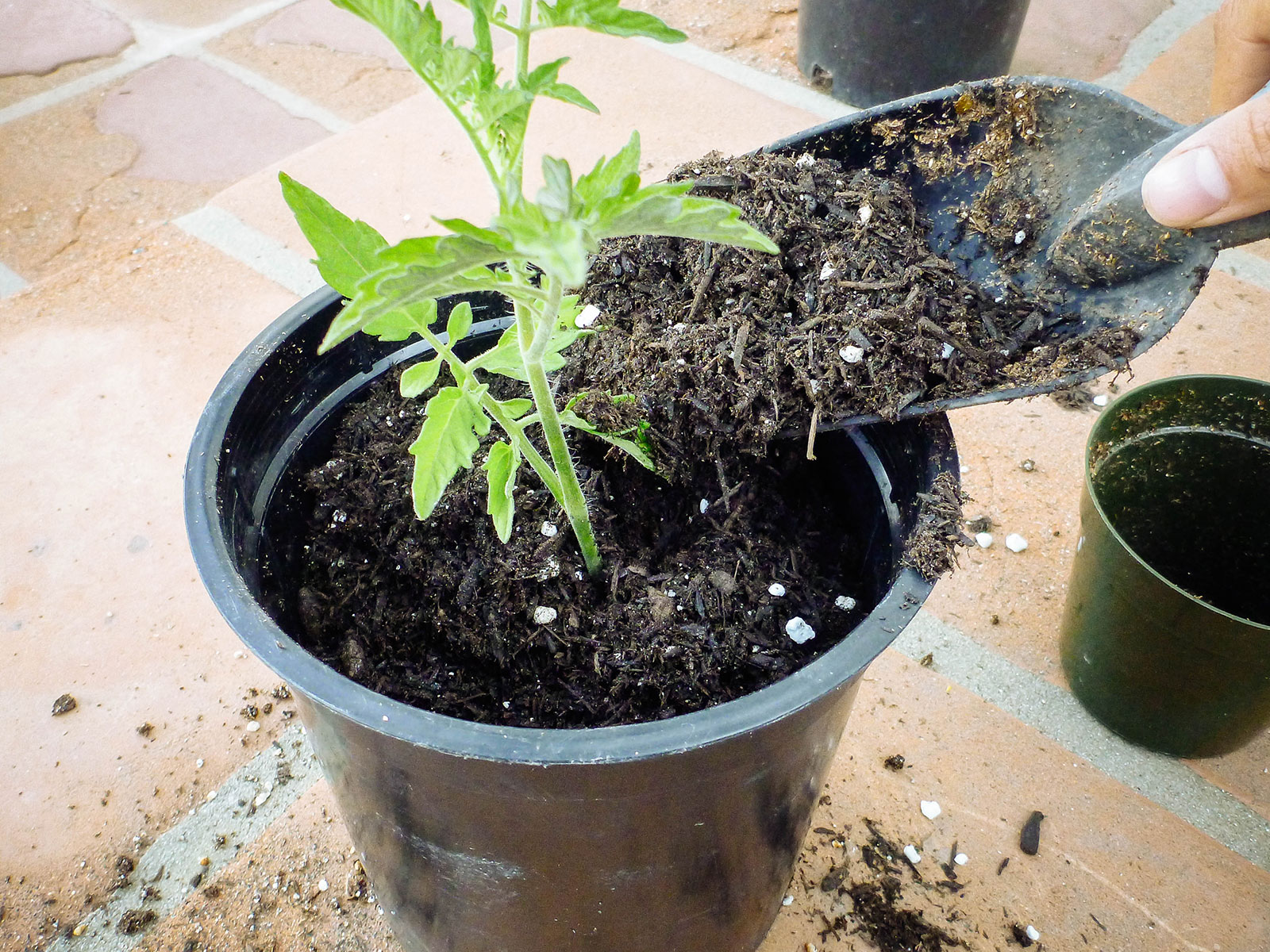

As shortly as they’ve grown their first set of true leaves, seedlings shouldn’t be left inside the identical tiny cells or pots they’re started in. They’ll develop to be root-bound or menace their roots being damaged contained in the occasion that they’re moved as rapidly as they’re overgrown.
So, you have to to pot up your seedlings into larger containers while you aren’t transplanting them instantly. For a lot of who want to shield your full seedlings which have germinated, this allows you to do that with out sacrificing any that furthermore seem healthful.
To stay away from dropping a great deal of pretty a few seedlings that sprouted inside the identical cell, scoop out the whole cell using a spoon. Gently separate the seedlings, then repot each seedling into its personal 3-inch pot.
Tomato seedlings revenue from being repotted by burying the stems as masses as a result of the underside set of leaves; doing so encourages further roots to develop alongside the stem, forming a further sturdy root system.
You presumably might even repot tomato seedlings a second time (into gallon-sized containers) to profit from these adventitious roots. It’s larger to have a short and stout tomato plant with a deeper root mass than a tall, slender one with roots concentrated near the underside.
View the Web Story on seed starting errors.
